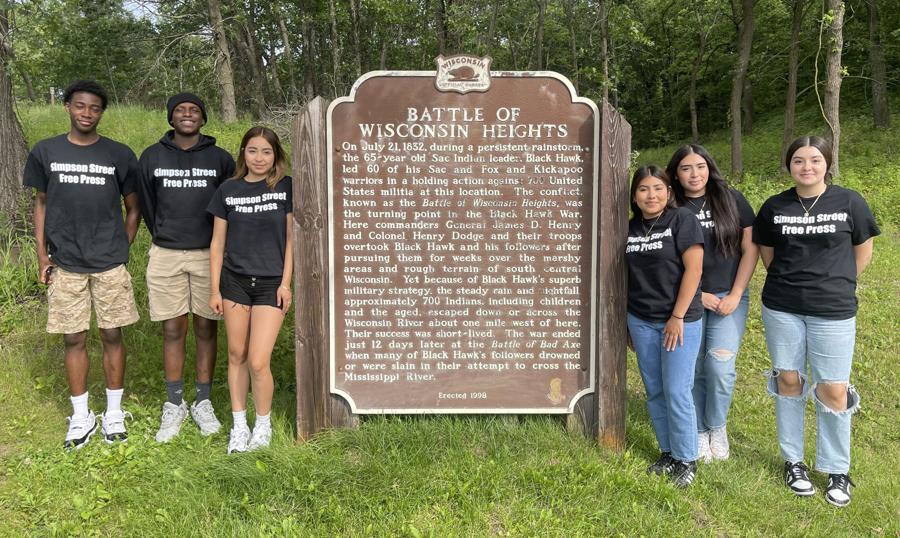
The Battle of Wisconsin Heights
by Ayelen Flores Ruiz, age 14
The Battle of Wisconsin Heights was the turning point of the Black Hawk War, an historic event that helped shape Wisconsin. It is also a very important battle because it was the last Indigenous battle to happen in the United States. A critical outcome of the battle was the decrease of the Native American population.
The “Black Hawk War'' refers to the conflict between the U.S. and Sauk American Indians. It was named after Black Hawk, the leader of the Sauk tribe, who led the Fox, Kickapoo and Ho-Chunk tribes in battle. The Battle of Wisconsin Heights began on July 21, 1832, when about 120 warriors and 700 non-combatants passed through what is now downtown Madison. The Sauk hiked over the landmarks now known as the Capitol Square, UW-Madison campus, and Lake Mendota. The Sauk starved throughout the duration of the journey, which led many to be caught or killed by soldiers. After reaching the south shore of the Wisconsin River, U.S. troops fired upon the Sauk who tried to cross the Wisconsin River while the sun was setting. The troops had been deployed in that same spot since morning.
When the Sauk were suppressed by the U.S. Army, they had no choice but to fight or sacrifice their loved ones. Black Hawk said, “We were compelled to fight, or sacrifice our wives and children to the fury of the whites.” About 120 Sauk defended the pass against three thousand Whites, while the non-combatants crossed the Wisconsin River in plain sight. As soon as they were safe, they dispersed and ran.
It continued to grow dark and the U.S. decided not to chase chief Black Hawk across the Wisconsin River. In the night, some of the Sauk formed rafts and headed towards Prairie du Chien. Black Hawk wrote, “I had no objection to their leaving, as my people were all in a desperate condition being worn out from traveling and starving with hunger.” Black Hawk did not do anything to stop them because their only hope was to cross the Mississippi River to save themselves.
Unfortunately, soldiers from Prairie du Chien were stationed on the Wisconsin and many Sauk were either killed, drowned, or taken as prisoners. However, some were able to escape into the woods. Before dawn in the same place where the Sauk were during the war, a voice spoke in an unknown tongue. It was the Sauk elder Neapope, trying to inform the tribe that their squaws (wives), children, and others were being forced into war.
The Black Hawk War ended 12 days later at the Battle of the Bad Axe. The Battle of the Bad Axe was when the U.S. caught up with the fleeing Sauk. Most were killed or captured by the militias, and those who swam across the Mississippi River were killed by Sioux warriors. The Sioux were enemies of the Sauk who were also in favor of helping the Whites. After the tragic loss of many lives, the legacy of each individual involved in the Battle of Wisconsin Heights forever lives on.
[Sources: Black Hawk - An Autobiography; Wisconsin Historical Society; La Crosse Tribune]



Loading Comments...